Lynx Reactive Salvo Fire System
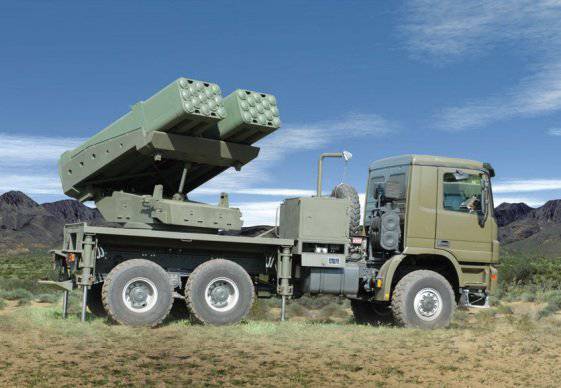
The Lynx is an economical multiple rocket launcher system (MLRS) designed for firing 122 to 300 mm missiles placed on a highly mobile chassis with the 6x6 wheel formula. This fully autonomous launcher can be recharged for 10 minutes. MLRS Lynx can be configured to launch various types of missiles from two sealed container packages: 40 (2 20 package of missiles each) 122-mm Grad rockets with a maximum range from 20 to 40 kilometers, 26 (2X13) 160-mm LAR- rockets 160 or ACCULAR with a maximum range of 45 kilometers or eight 300-mm missiles (2x4) EXTRA with a maximum range of 150 kilometers. In addition, this platform can serve as a launcher for high-precision Delilah-GL cruise missiles, as well as LORA tactical ballistic missiles, which have a maximum range of 280 km. Missiles can be equipped with various types of warheads, including fragmentation, incendiary, smoke, lighting or cluster with high-explosive or anti-tank elements.
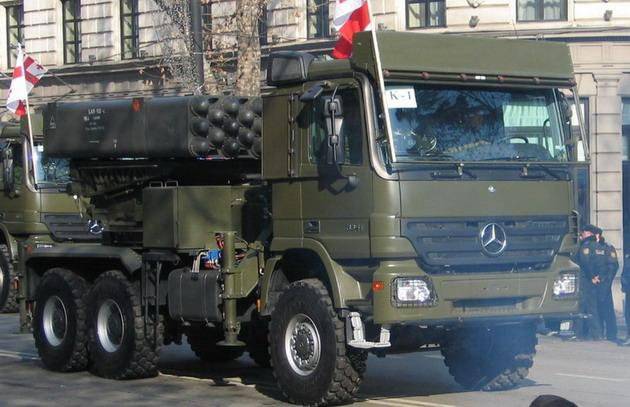
The advanced Lynx fire control system allows you to automatically select a sealed container package in accordance with the target you are firing and, accordingly, set the necessary parameters. High maneuverability and mobility allows the launcher to quickly change position, minimizing the risk of being under back-battery fire. Airborne communications and computing allow the Lynx to operate both autonomously and as part of network-centric schemes, being either a passive or an integrated element of larger artillery formations.
The Israel Military Industries Concern (Israel Military Industries, IMI) is the leading supplier of high-tech defense products to the armed forces around the world. IMI offers its customers state-of-the-art products and systems that meet operational requirements and needs. Its main products include a full range of ground and air weapons and ammunition systems suitable for all types of tasks - high intensity conflicts, asymmetric wars and internal security. In recent years, IMI’s steady average annual income exceeds $ 485 million. Every year, the concern spends about $ 50 million on research and development.
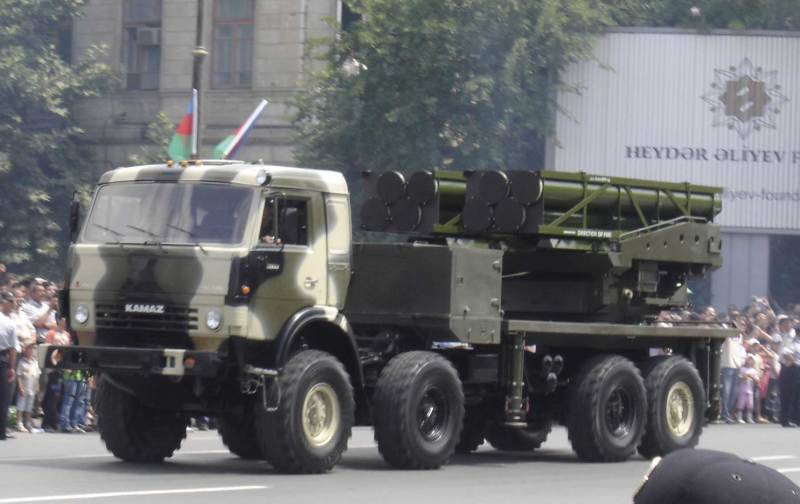
Disposable missile sealed bags-containers are charged in the factory and perform the functions of transport containers and launchers. Blocks BM-21 Grad can be charged manually, they are less effective and are mainly used for training. MLRS Lynx has the functions of fully autonomous ballistic calculations and firing. It also has a fast deployment time, allowing you to open fire within a few minutes of the march. A full salvo can be carried out by the operator directly from the cab or remotely. The Lynx Mobile Launcher is serviced by a charging vehicle equipped with a crane. It carries four containers with missiles (two sets of reloading). Reloading usually occurs at a sufficient distance from the firing position in order to avoid counter-battery fire.
Systems of different versions of Lynx are in service with Azerbaijan, Argentina, Venezuela, Georgia, Israel, Kazakhstan, Romania and Chile. Georgia acquired the MLyn Lynx in the 2007 year, two 13-charging packages LAR-160 (or two 20-charging packages Grad) on the chassis of the Mercedes 3341 Actros truck (6x6). Azerbaijan recently acquired several MLRS Lynx. Lynx were specifically modified to meet the specific requirements of the Ministry of Defense of Azerbaijan. There they received the names Doly 1 (BM with 122-mm PC on KAMAZ-6350 chassis), Leyasan (BM with 160-mm PC on KAMAZ-6350 chassis) and Shimshek (BM with 300-mm PC on KAMAZ-6350 chassis). MLRS of Azerbaijan Lynx is used by Turkish 122-mm packages-containers T-122 Sakarya. Kazakhstan also acquired the KamAZ-63502-based MLRS Lynx, the system received the local name "Naiza" ("Spear").
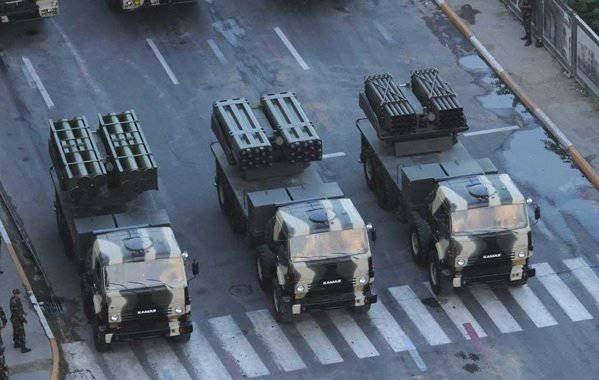
MLRS Lynx has the following advantages: fully autonomous launcher; the ability to launch any rocket caliber from 122 to 300 mm; recharge time less than 10 minutes; self-destructive submunition; modern system of command, control, communications, calculations and intelligence; increased accuracy; fire control computer; advanced inertial navigation system; improved mechanical / hydraulic systems.
Delilah
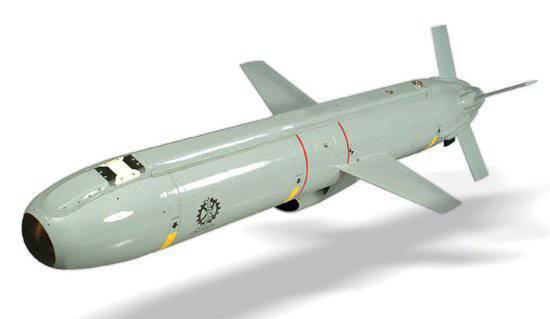
For high-precision strikes, the Israeli Military Industry (Israel Military Industries, IMI) offers Delilah missiles. Unlike long-range cruise missiles, the Delilah can combine a range of 250 km with loitering over the target, with a significant and unique opportunity to attack maneuvering or disguised important objects. A two-kilogram turbojet rocket is autonomously guided to a target along a predetermined route using a combination of inertial and GPS data. The rocket has the following characteristics: cruising flight speed - 0.3-0.7 Mach, cruising height - 8.500 m, accuracy - less than a meter, starting weight - 250 kg, length - 3.310 mm, wingspan - 1.150 mm, diameter - 330 mm, maximum range - 250 km.
EXTRA (Extended Range Artillery tactical-range artillery missile)

Extra Precision Ammunition EXTRA was developed by the IAI divisions: Rocket Systems Division and MLM. The goal of this program was to develop a rocket weaponscompatible with a wide range of launch platforms, while providing outstanding accuracy in hitting ground targets. This precision over-the-horizon weapon was developed to arm the Israeli and foreign armed forces.
EXTRA missiles are currently offered in container packages of four units each for use by ground launchers and can be equipped with a GPS guidance system for more accurate strikes. Thanks to disposable sealed container bags, a long service life and low operating costs are achieved. The rocket has a range over 130 (up to 150) kilometers and is equipped with an 125-kg warhead. The launch weight of the rocket is 450 kg, and the circular probable deviation (CVO) is less than 10 meters. The size of the rocket is very similar to the proven M26 missiles installed on the MLRS M270 used by the US Army and its allies. EXTRA is slightly larger in diameter than M26 (300 mm compared to 227 mm), and has a 3.97 meter in length.
LAR 160-mm
The standard 160-mm LAR rocket has a 3.314 meter in length, the weight of the 110 kg and the maximum range to 45 km, and the standard package contains the 13 rocket LAR. The solid propellant rocket engine weighs 36 kg and is said to have a “short burning time”. Drop tail provides flight stabilization after the rocket leaves the launch canister. Their scope is 350 mm. To achieve long and medium range, spoiler rings can be added to the nose of the rocket. The initial rotational speed at the start is 12 revolutions per second, with an increase to 20 revolutions per second at burnout. Maximum burnout rate 1,022 m / s. The rocket warhead has low aerodynamic drag. Its length is 1,279 mm, and the total weight of 46 kg.
ACCULAR
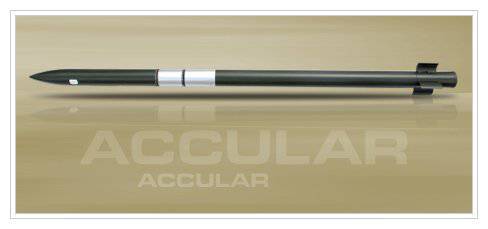
ACCULAR is a GPS-guided autonomous surface-to-surface missile. Based on LAR-160. A rocket with a diameter of 160 mm and a long 3,995 mm has a range from 14 to 40 km, and the weight of the warhead is 35 kg. Its circular probable deviation (CEP) is less than 10 meters. The rocket is controlled and navigated by an onboard computer. Jet thruster kit creates a trajectory correction for an accurate hit to the target. ACCULAR is a cost-effective choice for accurately hitting targets with high-explosive and unitary warheads.
122 mm PC BM-21 Grad
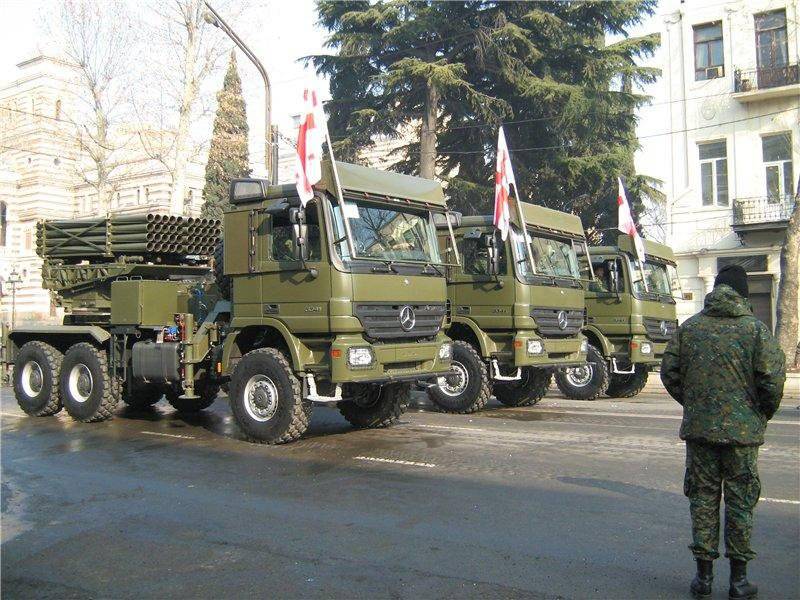
The standard package contains 20 rockets Grad length 2.87 meter and weight 66 kg. The rocket has a maximum range of 21 (40) km and a warhead weighing 20 kg. This system is also compatible with newly developed 122-mm rockets.
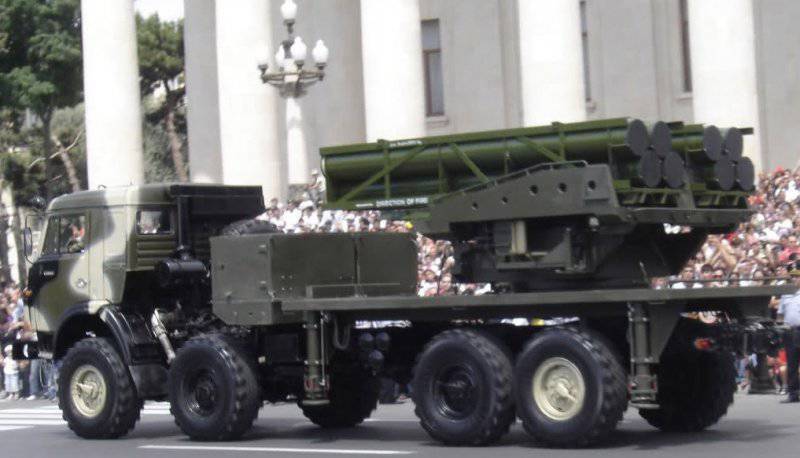
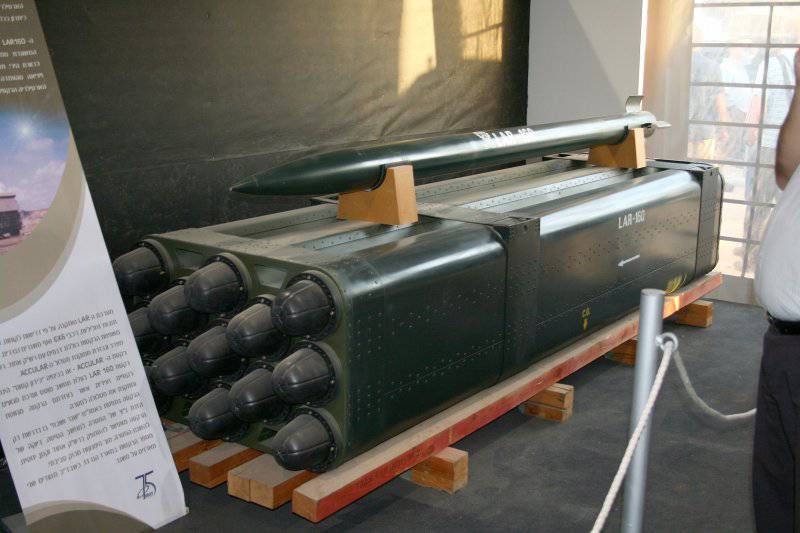
Information